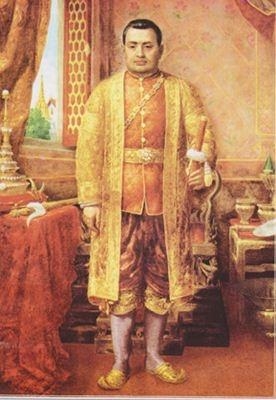Introduction
When, in 1511, the first European travelers from Portugal arrived in today`s Thailand, the country had already seen a long history .
The Tai people probably arrived in the course of the 9th century in the region, emigrating from today`s province of Guangxi in China. Already in the 10th century the Tai city states gathered in the Lavo kingdom, which, however, did not last long due to internal quarrels and finally became a part of the rising Khmer Empire.
As of the 13th century, the Khmer Empire became weaker and new independent Tai realms were established, such as the Sukothai Kingdom in central and south Thailand (1238 - 1583) and the Kingdom of Lanna in the north (1292 - 1775).
In the middle of the 14th century the rise of the city-state of Ayutthaya, a bit north of the later capital of Bangkok, began. This new Kingdom would slowly absorb the Sukothai Kingdom over the centuries. The end of Ayutthaya came in the year 1767 after a long war with Burma, that had risen to power in the northeast and already destroyed the Kingdom of Lanna in the process. As a result of the war, Ayutthaya was besieged, captured, its territory occupied and the King killed due to starvation.
After this episode, General Taksin seized power and relocated the capital to Thon Buri, a small city close to Bangkok, on the other side of the Chao Praya river. This short lived Kingdom, that could regain most of the former Kingdom again from the Burmese and expand eastward, ended in 1782, when a rebellion in the capital removed Taksin from power and the new King silently executed him.
This new King was Chao Phraya Chakri (born as Thong Duang but as King known as Buddha Yodfa Chulaloke or simply Rama I.), the highest ranking official under King Taksin, who moved the capital to Bangkok and established the Rattanakosin Kingdom under the Chakri Dynasty.
Although the quarrels with Burma continued over the next years, it became obvious that the greater threat to Siamese independence was the growing influence of the western powers. During the rule of King Jessadabodindra (Rama III.), who ascended to the throne in 1824, the first treaties with Great Britain (Burney-Treaty; 1826) and the United States (Roberts-Treaty; 1833) were signed.
In the mid 1830s Siam was a country with a population of 5 million people. The educational standards were low with a literacy rate of roughly 4.5%, but measures were taken to slowly improve that. Just a little more than half of the population were Thai, but with the exception of the military leadership all other nations had equal possibilities to rise to higher ranks of the society. Siam was still backwardish compared to western countries, and it remained to be seen whether it would maintain its independence or not.



